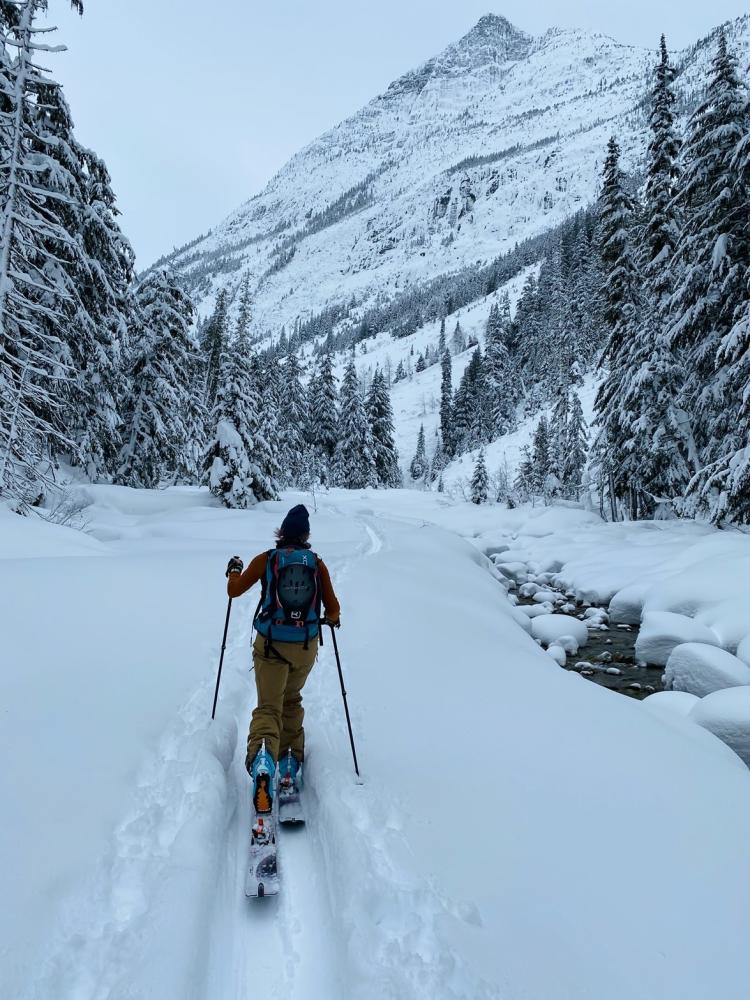Backcountry Ski and Snowboard Gear Selection 101

But wait! Before you head into the backcountry this winter, make sure you fully understand what you are getting yourself into. Aside from education, let's chat gear selection for the backcountry.
Safety
This is the most important gear selection when traveling in avalanche terrain. You should always carry a beacon, shovel, and probe. These items can be purchased individually from different brands or as a bundle. This gear will also need to be carried in a bag.
Any backpack can work but the safest options include float packs. These are self-deployed packs to help you float above avalanche debris in case of an emergency. Hopefully you would never need to use this feature, but it is a good peace of mind on steeper terrain.
Hard Goods
Selecting hard goods for backcountry travel is all about weight and functionality. When skiing or snowboarding in the backcountry, you always want to be prepared with a helmet, goggles, skis/snowboard, boots, bindings and poles. Backcountry travel requires specific hard goods (excluding helmets and goggles).
A lightweight pair of skis or a splitboard will make any tour more manageable, along with a good sticky pair of skins to help you not slide around. As a snowboarder, different bindings are crucial for a splitboard. Splitboard bindings pivot from tour to snowboard mode, making for an easy transition. As a skier, you will need specific boots and bindings. Pin bindings are a lightweight setup that allow your heels to be locked or unlocked for skiing and touring mode. Backcountry ski boots have specific holes for the pin bindings to lock into, along with a walk and ski mode. You will also need a pair of ski poles. The poles that adjust are best for touring, especially if you are splitboarding so they can go on your pack for the way down.
Soft Goods
These are items you probably already have in your closet if you already ski, snowboard, sled, or spend time in the snow. Heading out into the backcountry requires specific layering techniques to manage your body temperature between touring and skiing.
When I head out I always plan to start my layering with a long sleeve base layer, long underwear pants, warm ski socks, and a beanie or ball cap. Usually I do not wear another layer after my long underwear, aside from my ski pants. My layering focuses mainly on my upper body. While touring I like to wear my base layer and a vest. If it's really cold I might trade the vest for a fleece. In my pack I carry my extra layers along with a puffy jacket and a wind layer. Depending on the conditions I may wear one or both of these for the ski down. Additionally, I start in a very thin pair of gloves but always have my mittens for the ski down!
Most Importantly
The most important gear selection for backcountry travel is a buddy! Never forget your beacon, probe, shovel, and buddy! This gear is only a starting point, what is most important is a solid set of skills and knowledge. Get educated about avalanche terrain and decision making.
Interested in an avalanche class or intro to ski touring? Check out our Avalanche Courses & Winter Activities returning this Spring!


